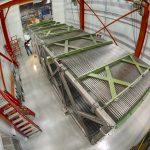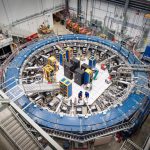DOE Office of Science, Oct. 13, 2023
Although neutrinos are the most common matter particle in the universe they are also known as ghost particles because they move through our bodies every second without ever interacting with us. Neutrinos won’t be scaring anyone on Halloween but they will be studied by scientists in the Deep Underground Neutrino Experiment led by Fermilab.


